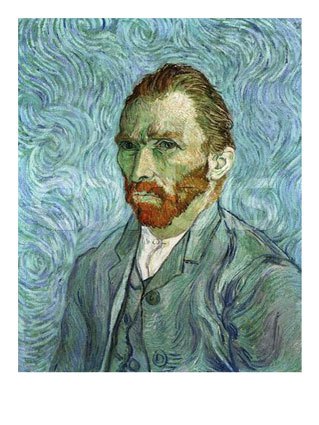Self Portrait, 1887
Self portrait painted in 1887 by Vincent Van Gogh is an oil on canvas 41 x 32.5 cm, exposed in The Art Institute of Chicago. In the spring 1886, Vincent Van Gogh goes to the art capital of the world in those times, Paris.
He went to art school where he met Henri de Toulouse-Lautrec, Emile Bernard . He also started to get in contact with the group of impressionist painter, where he met Paul Gaugin, who was a important influence for him until their friendship was finished.

Self-Portrait (1889)
The cumulus of impressions of the city and the great influence the city of the art had on him resulted into one of the most important painters in the modern art period. Vincent painted many self-portraits through his life. In one of his last self-portraits painted in 1889, Van Gogh contrasted the light brown colours of his face with the intense red brown colour of his hair and the blue of his suit.
Eventually he increased the movement of the colour strokes, from the white of his shirt to the suit and the head to get to energetic spirals of colour of the wall behind him.
The experiences and difficulties of the last stage of his life are guessed in his face. Van Gogh confessed to his brother that he tried hard to look apparently calm in this self- portrait. In this self-portrait, Van Gogh he only represents his left side of his face, free of scars (remember he had some hard times where he would hurt himself, like after the argument with Gaugin when he cut off his right ear). The meditated composition of this self-portrait and the realism of his penetrating facial structure make this the best painting of self-portrait.
Self Portrait, 1889